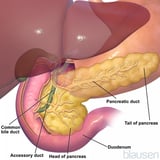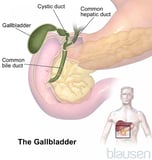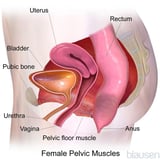What Are The Five Main Barriers to Block Pathogens
Natural barriers include the skin, mucous membranes, tears, earwax, mucus, and stomach acrid. Likewise, the normal catamenia of urine washes out microorganisms that enter the urinary tract.
Mucous membranes, such as the lining of the mouth, nose, and eyelids, are besides effective barriers. Typically, mucous membranes are coated with secretions that fight microorganisms. For case, the mucous membranes of the eyes are bathed in tears, which comprise an enzyme called lysozyme that attacks leaner and helps protect the eyes from infection.
The digestive tract Overview of the Digestive System The digestive system, which extends from the mouth to the anus, is responsible for receiving food, breaking it down into nutrients (a process called digestion), absorbing the nutrients into... read more has a series of constructive barriers, including stomach acrid Stomach The breadbasket is a large, bean-shaped, hollow muscular organ consisting of three regions: Cardia Torso (fundus) Antrum (See likewise Overview of the Digestive System.) read more , pancreatic enzymes Pancreas The pancreas is an organ that contains 2 types of glandular tissue: Pancreatic acini Islets of Langerhans (See as well Overview of the Digestive System.) The acini produce digestive enzymes.... read more  , bile Gallbladder and Biliary Tract The gallbladder is a small, pear-shaped, muscular storage sac that holds bile and is interconnected to the liver by ducts known equally the biliary tract. (See also Overview of the Liver and Gallbladder... read more
, bile Gallbladder and Biliary Tract The gallbladder is a small, pear-shaped, muscular storage sac that holds bile and is interconnected to the liver by ducts known equally the biliary tract. (See also Overview of the Liver and Gallbladder... read more  , and abdominal secretions. These substances can kill bacteria or prevent them from multiplying. The contractions of the intestine (peristalsis, which moves contents of the bowel through the digestive tract), and the normal shedding of cells lining the intestine assist remove harmful microorganisms.
, and abdominal secretions. These substances can kill bacteria or prevent them from multiplying. The contractions of the intestine (peristalsis, which moves contents of the bowel through the digestive tract), and the normal shedding of cells lining the intestine assist remove harmful microorganisms.
The urinary tract Overview of the Urinary Tract Ordinarily, a person has two kidneys. The balance of the urinary tract consists of the following: 2 ureters (the tubes connecting each kidney to the bladder) The bladder (an expandable muscular... read more also has several effective barriers. The bladder is protected past the urethra Urethra The urethra is a tube that drains urine from the bladder out of the body. In men, the urethra is about 8 inches (20 centimeters) long, ending at the tip of the penis. In women, the urethra is... read more  , the tube that drains urine from the body. In males, the urethra is long enough that bacteria are seldom able to pass through it to reach the bladder, unless the leaner are unintentionally placed there by catheters or surgical instruments. In females, the urethra is shorter, occasionally allowing external leaner to pass into the float. In both sexes, when the bladder empties, information technology flushes out whatever bacteria that reach information technology.
, the tube that drains urine from the body. In males, the urethra is long enough that bacteria are seldom able to pass through it to reach the bladder, unless the leaner are unintentionally placed there by catheters or surgical instruments. In females, the urethra is shorter, occasionally allowing external leaner to pass into the float. In both sexes, when the bladder empties, information technology flushes out whatever bacteria that reach information technology.
Whatever injury, including an invasion by microorganisms, causes inflammation in the afflicted expanse. Inflammation, a circuitous reaction, results from many different weather. The damaged tissue releases substances that cause inflammation and that direct the immune organization to do the following:
-
Wall off the area
-
Attack and kill whatever invaders
-
Dispose of dead and damaged tissue
-
Begin the procedure of repair
Still, inflammation may non be able to overcome big numbers of microorganisms.
During inflammation, the blood supply increases, helping carry immune cells to the afflicted surface area. Considering of the increased claret catamenia, an infected area near the surface of the body becomes cherry-red and warm. The walls of blood vessels become more porous, allowing fluid and white blood cells to pass into the affected tissue. The increment in fluid causes the inflamed tissue to slap-up. The white claret cells attack the invading microorganisms and release substances that continue the procedure of inflammation.
Other substances trigger clotting in the tiny vessels (capillaries) in the inflamed area, which delays the spread of the infecting microorganisms and their toxins.
Many of the substances produced during inflammation stimulate the nerves, causing pain. Reactions to the substances released during inflammation include the chills, fever, and muscle aches that normally accompany infection.
-
Killer T cells T cells
 (a type of white blood cell) that tin can recognize and kill the invading microorganism
(a type of white blood cell) that tin can recognize and kill the invading microorganism
Antibodies adhere to and immobilize microorganisms. They kill them outright or assist neutrophils target and kill them.
How well the immune system defends the body against each microorganism depends partly on a person'south genetic make-upward.
A role of the brain called the hypothalamus controls trunk temperature. Fever results from an actual resetting of the hypothalamus'due south thermostat. The torso raises its temperature to a college level by moving (shunting) blood from the pare surface to the interior of the trunk, thus reducing heat loss. Shivering (chills) may occur to increase heat production through musculus contraction. The trunk'due south efforts to conserve and produce oestrus go along until claret reaches the hypothalamus at the new, higher temperature. The new, college temperature is then maintained. Later, when the thermostat is reset to its normal level, the body eliminates excess heat through sweating and shunting of blood to the skin.
Certain people (such every bit alcoholics, the very old, and the very immature) are less able to generate a fever. These people may feel a drop in temperature in response to astringent infection.
williamsprond1952.blogspot.com
Source: https://www.msdmanuals.com/home/infections/biology-of-infectious-disease/defenses-against-infection
0 Response to "What Are The Five Main Barriers to Block Pathogens"
Post a Comment